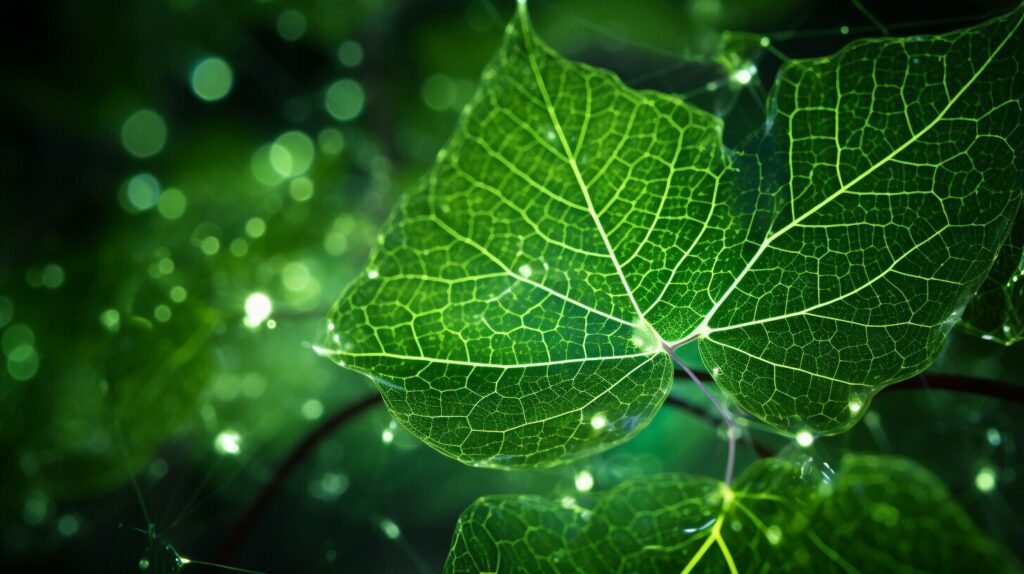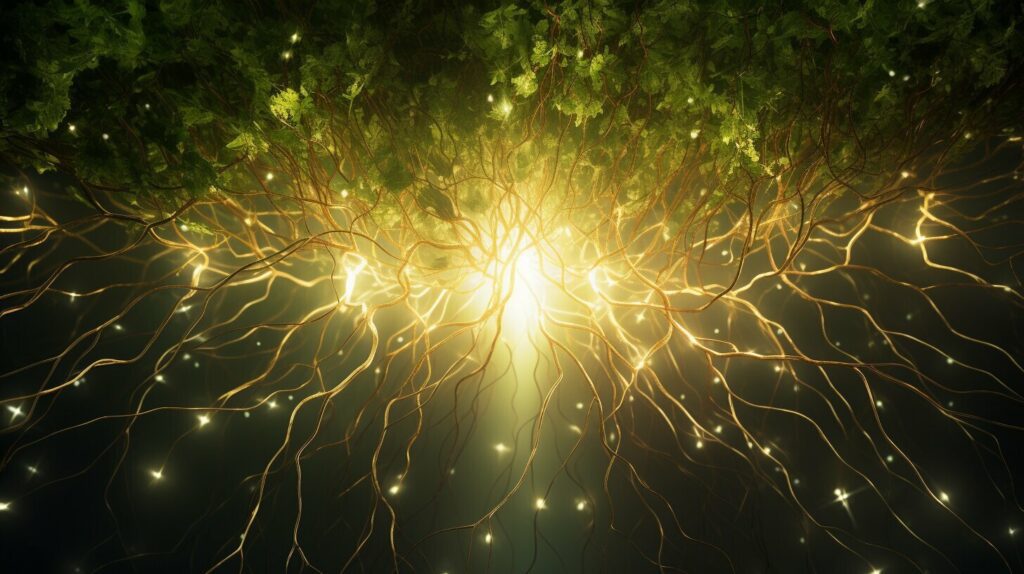As a professional copywriting journalist, I’m often fascinated by the workings of nature. Are plants producers? This question has intrigued scientists for centuries, as they attempted to unravel the mysteries behind plant energy production.
Plants certainly seem to generate energy, but how do they do it? In this section, we’ll dive into the intricacies of plant energy production, exploring the mechanisms that make plants some of the most fascinating organisms on Earth.
- Plants can generate energy, but the process is more complex than you might think.
- The photosynthesis process plays a critical role in plant energy production.
- Plants are the primary producers in ecosystems, shaping the balance of energy flow.
- Plant energy conversion is a crucial process that contributes to overall food production.
- Plant autotrophs are masters of biomass production, essential to the food chain.
The Photosynthesis Process: Unleashing Plant Power
Have you ever wondered how plants produce energy? The answer lies in the photosynthesis process. This incredible process allows plants to convert sunlight into energy, making them the primary producers in the plant food chain.
The photosynthesis process can be broken down into two main stages. In the first stage, known as the light-dependent reaction, plants capture energy from sunlight in specialized structures called chloroplasts. This energy is used to create ATP, a molecule that stores energy and is essential for many cellular processes. Additionally, oxygen is produced as a byproduct of this stage, which is released into the atmosphere.
The second stage, known as the light-independent reaction, takes place in the stroma of the chloroplasts and involves the use of ATP to convert carbon dioxide into sugars, such as glucose. This process is also referred to as the Calvin cycle.
The photosynthesis process plays a vital role in the plant food chain. By producing their own energy, plants serve as the foundation for all other organisms in the food chain. As herbivores consume plants, they acquire the energy that the plants have produced, and carnivores then consume the herbivores, passing along that energy further up the food chain.
It’s truly remarkable how this process allows plants to produce their own food and provide energy to other organisms. The photosynthesis process is not only crucial for the survival of plant life but for all life on Earth.

“Photosynthesis is the most important biological process on our planet. It is responsible for life as we know it, and without it, we would not be here.”
The Role of Plants in Ecosystems: Nature’s Primary Producers
As we explored in the previous section, plants are incredible organisms that are capable of producing their own food through the process of photosynthesis. This ability makes them a critical component of ecosystems, as they serve as nature’s primary producers.
But what exactly does it mean to be a primary producer? Essentially, primary producers are organisms that are at the bottom of the food chain, producing energy-rich organic compounds like carbohydrates, which are then consumed by other organisms higher up the chain.
Plants are unique in that they are the only primary producers that can convert energy from the sun into usable food through photosynthesis. This means that they play a vital role in the energy flow within ecosystems, providing the foundation upon which all other organisms rely.
In addition to their energy production capabilities, plants also play a crucial role in maintaining the balance of ecosystems. By absorbing carbon dioxide and releasing oxygen during photosynthesis, plants help to regulate the levels of these gases in the atmosphere, creating a habitable environment for other organisms.
Overall, it’s clear that plants are essential to the functioning of ecosystems as primary producers. Their ability to produce energy, maintain balance, and support other organisms make them a vital and fascinating part of the natural world.

Plants are masters of energy conversion, using sunlight to produce the food they need to survive. The process of converting sunlight into food is called photosynthesis, and it is the key to understanding how plants produce energy.
Photosynthesis occurs in the chloroplasts of plant cells, where pigments called chlorophyll absorb sunlight and convert it into chemical energy. This energy is used to power the production of glucose, the primary source of energy for plants.
The glucose produced by plants is used for a variety of purposes, including fueling the plant’s growth and maintenance, as well as serving as a source of energy for other organisms in the ecosystem. In this way, plants play a crucial role in the production of food within ecosystems.
But the process of energy conversion in plants goes beyond just photosynthesis. Plants also convert the glucose they produce into other forms of energy, such as starch, which can be stored for future use.
Furthermore, plants also contribute to the production of energy by providing biomass for other organisms in the food chain. As autotrophs, or organisms that produce their own food, plants are masters of biomass production, serving as the foundation for many other organisms in the ecosystem.

In conclusion, the process of plant energy conversion is a fascinating and essential aspect of the intricate web of life on our planet. Through photosynthesis and their role as primary producers in ecosystems, plants are key players in the production of energy and the maintenance of life.
Plant Autotrophs: Masters of Biomass Production
Plants are the ultimate masters of biomass production, serving as the foundation of the food chain. Through the process of photosynthesis, plants convert sunlight into energy, creating a source of food for themselves and other organisms in their ecosystem. These self-nourishing organisms are known as autotrophs, which make up the base of the food chain.
Autotrophs use simple inorganic compounds like carbon dioxide and water to produce organic compounds such as glucose. This glucose, in turn, serves as the primary source of food for plants and other organisms in their ecosystem. As they produce this organic matter, they contribute to the overall production of energy within ecosystems, making them essential players in the intricate web of life on our planet.
Plants are capable of producing enormous amounts of biomass, compared to other organisms in the food chain. They have the unique ability to produce their food, and thus they are incredibly efficient in utilizing the resources available to them. As a result, they are a critical force in maintaining the balance of energy flow in ecosystems, sustaining life and ensuring the survival of other organisms.

Without these foundational autotrophs, the food chain would collapse, leading to a catastrophic loss of life in ecosystems. Plants are not only the primary producers of energy, but they also play a crucial role in balancing the carbon cycle, trapping carbon in their biomass, and regulating the levels of atmospheric CO2.
In conclusion, plants are the primary producers of energy, responsible for sustaining life and maintaining the balance of energy flow in ecosystems. Through the process of photosynthesis, plant autotrophs produce biomass, serving as the foundation for other organisms in the food chain. Their remarkable ability to produce organic matter efficiently makes them a critical force in the intricate web of life on our planet.
Conclusion
In conclusion, my exploration of whether plants are producers has led me to the fascinating world of plant energy production. Through the process of photosynthesis, plants unleash the power that fuels the ecosystem, making them the primary producers of energy in nature.
As I’ve learned, plants play a vital role in sustaining life and maintaining the balance of energy flow in ecosystems. Their ability to convert sunlight into food and produce biomass is nothing short of remarkable, making them the masters of energy production.
As I close this chapter on plant energy, I am filled with a renewed appreciation for the intricate web of life on our planet. The next time I see a plant, I will remember how crucial it is to the ecosystem and the role it plays in sustaining life.
Thank you for joining me on this journey of discovery. Let’s continue to unlock the mysteries of the natural world together.
FAQ
Q: Are plants producers?
A: Yes, plants are producers. Through the process of photosynthesis, they convert sunlight into food, making them the primary producers in ecosystems.
Q: What is the photosynthesis process?
A: Photosynthesis is the process through which plants convert sunlight, carbon dioxide, and water into glucose and oxygen. It is the key to plant energy production.
Q: What is the role of plants in ecosystems?
A: Plants play a crucial role as primary producers in ecosystems. They sustain life by capturing sunlight energy and converting it into food for themselves and other organisms in the food chain.
Q: How do plants convert sunlight into food?
A: Plants convert sunlight into food through the photosynthesis process. They use chlorophyll and other pigments to capture sunlight, which is then used to convert carbon dioxide and water into glucose and oxygen.
Q: What are plant autotrophs?
A: Plant autotrophs are organisms that can produce their own food through photosynthesis. Plants are the most common examples of autotrophs and they serve as the foundation for the food chain, producing biomass for other organisms.
Q: What is the conclusion regarding plants as producers?
A: In conclusion, plants are indeed producers. Through photosynthesis, they convert sunlight into food, making them the primary producers that fuel the energy of life in ecosystems.




